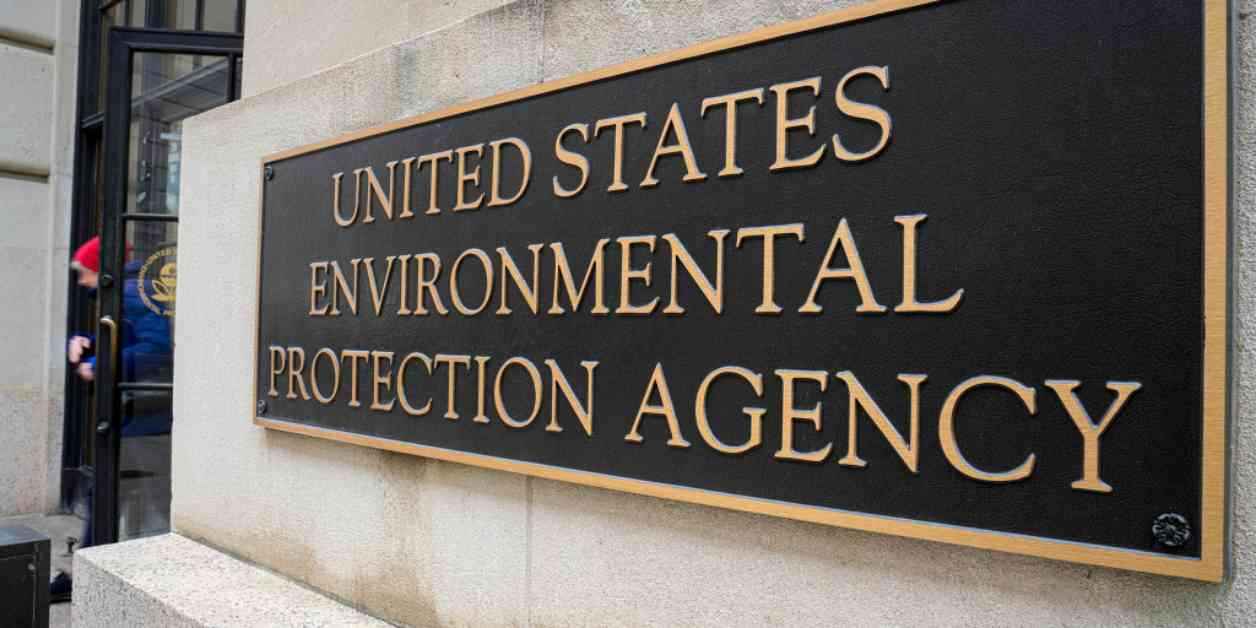In the past two weeks, the Environmental Protection Agency (EPA) has been in the midst of significant changes, causing quite a stir within the agency. Lee Zeldin, the newly appointed EPA administrator, has implemented several sweeping personnel decisions that have left staff reeling.
**Staff Layoffs and Tool Closure: A Shake-Up at the EPA**
One of the most jarring moves by Zeldin was the notification given to approximately 1,100 “probationary” employees, who had been with the agency for less than a year, that their termination could be imminent. This abrupt decision sent shockwaves through the EPA, leaving many employees uncertain about their future within the agency’s ranks.
Adding to the turmoil, 168 staffers focused on environmental justice issues were placed on administrative leave. These employees were spread across the EPA’s regional offices and headquarters, further exacerbating the sense of instability and uncertainty among staff members.
In another significant change, the EPA took down the EJScreen online mapping tool, which had been a valuable resource used by government entities to support decision-making around environmental justice. This tool enabled policymakers to access demographic data vital for ensuring equitable access to clean and healthy environments, particularly for underserved communities.
The removal of EJScreen represents a shift away from prioritizing environmental justice concerns, raising questions about the agency’s commitment to addressing the unique challenges faced by marginalized communities. By dismantling this tool, the EPA is signaling a departure from its previous approach of viewing environmental issues through the lens of race and socioeconomic disparities.
**Lee Zeldin’s Agenda: A Vision for the EPA’s Future**
Upon assuming his role as administrator, Zeldin wasted no time in outlining his priorities for the agency. In an address to over 10,000 staff members, he emphasized the need to streamline operations at the EPA and eliminate wasteful practices. Zeldin highlighted the importance of maximizing efficiency to make the best use of taxpayer dollars, acknowledging the economic challenges faced by Americans.
One of the key directives Zeldin is following is President Donald Trump’s executive order titled “Ending Radical And Wasteful Government DEI Programs.” This order sets the tone for the EPA’s future direction, aligning with the administration’s broader agenda of reducing government spending and oversight.
Molly Vaseliou, an EPA spokesperson, underscored the agency’s commitment to implementing Trump’s executive orders, signaling a shift towards a more conservative and cost-conscious approach to environmental policy. Vaseliou’s statements reflect the broader ideological shifts occurring within the EPA under Zeldin’s leadership.
**Staff Concerns and Uncertainty: A Tumultuous Environment**
The recent upheaval at the EPA has left many staff members feeling anxious and uncertain about the agency’s future direction. Marie Owens Powell, president of the American Federation of Government Employees Council 238, expressed the widespread sense of disarray and exhaustion among EPA employees in the face of ongoing changes.
One EPA worker, speaking anonymously out of fear of reprisal, described the prevailing atmosphere as one of limbo and apprehension. The fear of running afoul of executive orders or opposing the administration’s agenda has created a pervasive climate of caution and apprehension among staff members, stifling their ability to voice dissent or push back against policy changes.
As Zeldin begins to implement his agenda and reshape the EPA’s priorities, the agency’s rank-and-file employees are left grappling with uncertainty and trepidation about their roles and the future of the organization. The sweeping changes initiated by Zeldin and the Trump administration have left many employees feeling unsettled and apprehensive about what lies ahead.
As the EPA navigates this period of transition and transformation, the true impact of these changes on the agency’s mission and staff remains to be seen. The coming weeks and months will likely bring further shifts and challenges as the EPA adapts to a new era under Zeldin’s leadership.


